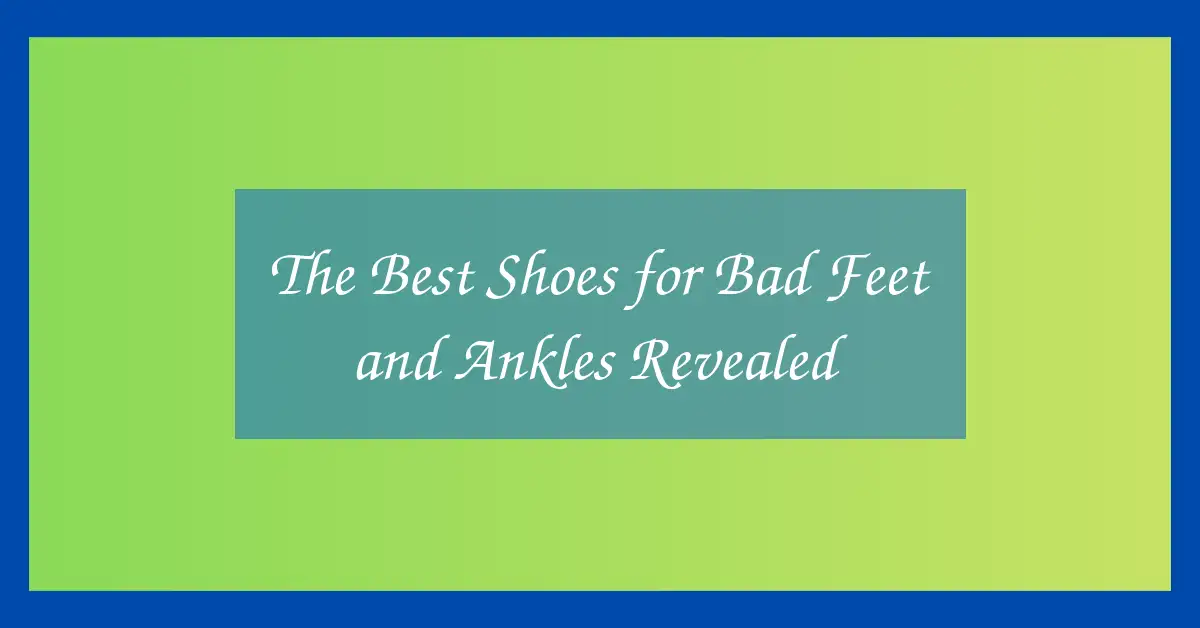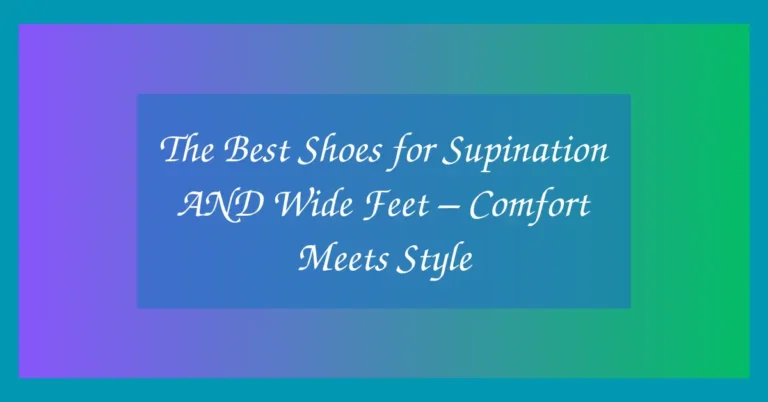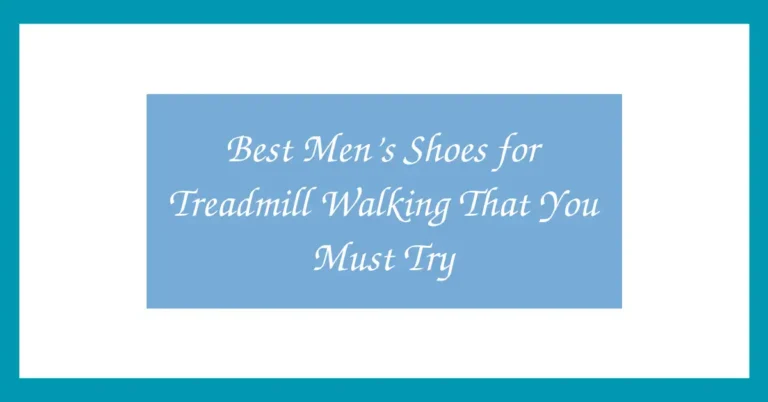The Best Shoes for Bad Feet and Ankles Revealed
When dealing with bad feet and ankles, selecting the right footwear is not just a matter of comfort it’s essential for maintaining mobility and quality of life. Poorly fitted or unsuitable shoes can exacerbate existing problems, leading to pain and further injuries. This makes the choice of shoes critical not only for daily comfort but also for preventing potential complications.
Footwear that provides proper support and alignment can greatly improve your stability, which is crucial in safeguarding against the strains that lead to discomfort and injuries. In this article, we’ll explore the best shoes for those with foot and ankle issues, ensuring you can make an informed decision that prioritizes your health and well-being.
Top 10 Shoes for Bad Feet and Ankles
1. Orthofeet Springfield Women’s Mary Jane Shoes
Orthofeet is well-known for its focus on orthopedic needs and the Springfield Mary Jane shoes are no exception. These shoes offer a non-binding, stretchable design that accommodates various foot conditions like bunions and hammertoes without causing pressure.
The anatomical arch support and cushioning heel pad conform to the contours of your foot, reducing stress on the foot and ankle joints. Their lightweight, ergonomic sole along with the air cushioning softens step and enhances stability. Moreover, they come with a removable insole to accommodate custom orthotics.
Pros:
- Excellent for sensitive feet and various foot deformities.
- Stretchable, non-binding upper design.
- Superior arch support and cushioning.
- Lightweight ergonomic sole for better stability.
- Removable insoles for custom orthotics.
Cons:
- Style might not appeal to all users.
- Limited color options.
- Pricier than some other options.
2. Brooks Addiction Walker Men’s/Women’s Walking Shoes
The Brooks Addiction Walker is a perfect blend of support and cushioning, making it ideal for those with bad feet and ankles. It features an extended progressive diagonal rollbar that strategically positions arch support to guide and keep the body in its natural path of motion. Its BioMoGo DNA adapts to your stride, weight, and speed to protect by reducing the impact on joints.
The durable, slip-resistant outsole ensures safe walking on various surfaces, and the cushioned midsole provides a plush feel underfoot.
Pros:
- Excellent motion control and arch support.
- BioMoGo DNA cushioning adapts to your needs.
- Durable and slip-resistant outsole.
- Available in both men’s and women’s models.
Cons:
- Can be somewhat heavy.
- Limited style and color options.
- Higher price point.
3. New Balance 990v5
The New Balance 990v5 is a fantastic choice for those seeking balance between cushioning and stability. This shoe offers a classic design with modern capabilities. It features a strong and durable blown rubber outsole and an ENCAP midsole technology combining soft cushioning EVA with a tough polyurethane rim to deliver all-day support.
The breathable mesh and pigskin leather upper provide comfort and durability, while the dual-density collar foam protects your ankles and helps prevent irritation.
Pros:
- Great for all-day wear and extensive walking.
- Durable construction with high-quality materials.
- Effective combination of cushioning and stability.
- Breathable and comfortable fit.
Cons:
- Expensive.
- May feel bulkier than other models.
- Limited color choices in certain styles.
4. Skechers Arch Fit – Banlin
Skechers Arch Fit – Banlin is an excellent option for those who need a casual shoe that doesn’t compromise on foot support. These shoes feature a patented Arch Fit insole system with podiatrist-certified arch support, dramatically improving foot alignment and relieving pressure.
The soft sporty mesh fabric upper allows for breathable wear, and the flexible rubber traction outsole offers good grip. They are easy to slip on and off, making them convenient for everyday wear.
Pros:
- Podiatrist-certified arch support.
- Breathable mesh upper.
- Flexible rubber traction for better grip.
- Easy to wear with a slip-on design.
Cons:
- Casual style not suitable for formal occasions.
- May run small, requiring sizing up.
- Limited waterproof capabilities.
5. ASICS Gel-Kayano 26
The ASICS Gel-Kayano 26 is designed for the ultimate running experience, but its features make it an excellent shoe for those with foot and ankle issues as well. It boasts gel technology in both the forefoot and rearfoot for high-density shock absorption and a FlyteFoam midsole technology for exceptional bounce back and responsiveness.
The DuoMax support system enhances stability and support, while the AHAR outsole provides durability and traction. The mesh upper ensures breathability and comfort.
Pros:
- Superior gel-based cushioning for impact reduction.
- High level of stability and support.
- Durable with a high-abrasion rubber outsole.
- Breathable mesh upper.
Cons:
- On the expensive side.
- The design may be too sporty for casual wear.
- Heavier than some comparable models.
6. Propet Stability Walker
Propet’s Stability Walker is engineered for maximum comfort and protection, making it an ideal choice for those with foot and ankle concerns. It features a leather upper with brushed nylon lining and padded collar and tongue, offering a sturdy yet comfortable fit.
The rigid heel counter with a removable footbed supports orthotic needs. Its durable arch-supporting EVA midsole and a wide base help improve stability, reducing the risk of ankle twisting.
Pros:
- Robust leather construction enhances durability.
- Rigid heel counter supports the ankle.
- Removable footbed accommodates custom orthotics.
- Arch-supporting EVA midsole.
Cons:
- Aesthetic may be too utilitarian for some.
- Heavier than some modern alternatives.
- Limited breathability due to leather upper.
7. Vionic Walker Classic
The Vionic Walker Classic offers a unique blend of style and orthotic support, featuring a leather or suede upper, a moisture-wicking 100% polyester mesh liner, and a rubber sole that provides good traction.
It includes an active motion system technology for optimal walking comfort. The podiatrist-designed footbed promotes stability from the ground up and is excellent for those with heel pain, notably plantar fasciitis.
Pros:
- Stylish design with leather or suede options.
- Podiatrist-designed footbed for superior support.
- Active motion system for comfort.
- Effective for plantar fasciitis relief.
Cons:
- Price may be prohibitive for some budgets.
- The sole may wear down quicker on hard surfaces.
- Sizes may run small, necessitating sizing up.
8. Merrell Men’s/Women’s Jungle Moc
Merrell’s Jungle Moc is designed for both casual wear and rugged use, offering an easy slip-on design and a suede upper that provides comfort and durability.
The air cushion in the heel absorbs shock and adds stability, making it suitable for bad feet and ankles. Its M Select GRIP outsole delivers durable, highly slip-resistant stability on wet and dry ground, over mixed terrain.
Pros:
- Convenient slip-on design.
- Air cushion in the heel for shock absorption.
- Durable M Select GRIP outsole.
- Versatile for both casual and outdoor wear.
Cons:
- Suede may require more maintenance.
- Not as supportive for severe foot deformities.
- Can be warm, limiting breathability.
9. Clarks Unstructured Men’s Un.Bend Casual Oxford
Clarks Un.Bend Casual Oxford combines classic style with advanced comfort features, making it an excellent option for professional environments.
It offers a full-grain leather upper, breathable leather lining, and an ultra-flexible EVA outsole that reduces foot fatigue. The included air circulation system keeps feet cool and dry, and its lightweight design makes it comfortable for all-day wear.
Pros:
- Elegant full-grain leather design suitable for professional settings.
- Breathable materials and air circulation system.
- Ultra-flexible outsole for minimal foot fatigue.
- Lightweight construction.
Cons:
- Premium pricing.
- May not provide enough support for very unstable ankles.
- Leather requires care to maintain appearance.
10. Nike Air Zoom Pegasus 36
Nike’s Air Zoom Pegasus 36 offers advancements in comfort and functionality for those with bad feet and ankles, incorporating Nike Zoom Air cushioning that is responsive underfoot and a sleek, breathable upper design that ensures comfort during prolonged wear.
The outsole’s impact-absorbing rubber and the Flywire cables that secure the midfoot make it both durable and supportive for various activities.
Pros:
- Responsive Nike Zoom Air cushioning.
- Breathable upper design.
- Secure midfoot fit with Flywire cables.
- Versatile for various physical activities.
Cons:
- May be too sporty for non-casual environments.
- Some might find the fit too snug.
- Not specifically designed for orthotic support.
Buyer’s Guide
Selecting the best shoes for bad feet and ankles requires careful consideration of several key factors that contribute to both comfort and support. Here’s what you should look for:
-
Supportive Structure: Look for shoes that offer good arch support and a firm heel counter. These features help stabilize the foot and distribute weight more evenly, reducing pressure on any one part of the foot or ankle.
-
Cushioning: Adequate cushioning is crucial as it absorbs the impact while walking or standing. Shoes with enhanced cushioning in the midsole can alleviate stress on the feet and ankles by providing a soft, supportive layer between you and the ground.
-
Proper Fit: Shoes that fit well are vital. Too tight and they can exacerbate pain and lead to issues like bunions or hammertoes; too loose and they may not provide adequate support, leading to instability and increased risk of ankle sprains. Ensure there’s about a thumb’s width of space between the end of the shoe and your longest toe, and that there’s minimal slippage at the heel.
-
Material: Breathable materials such as leather or synthetic mesh allow for air circulation and help keep the feet dry, thereby reducing the risk of blisters and other skin irritations. Flexibility in the material can also accommodate feet with abnormalities, like bunions, without causing pressure.
-
Low Heels: High heels can put unnecessary stress on the ankles and balls of the feet. Opt for shoes with a low, stable heel; ideally, the heel should be less than two inches high to help distribute your body weight more evenly.
-
Non-Slip Sole: A durable, non-slip sole is essential for preventing falls, especially for those with stability issues. Look for soles that provide good grip on various surfaces.
-
Adjustability: Shoes with adjustable straps or laces can help accommodate changes in foot size throughout the day (common with conditions like edema) and allow for a better, more comfortable fit.
FAQ
Q1: What type of shoe is best for someone with flat feet and bad ankles?
For flat feet and bad ankles, orthopedic or motion control shoes are ideal as they provide the necessary arch support and firm ankle stabilization. Look for features like structured cushioning and a contoured footbed.
Q2: Can I wear regular sneakers if I have bad ankles?
While regular sneakers offer basic support, those with bad ankles should choose sneakers with enhanced ankle support, such as high-tops, which provide additional stability.
Q3: How often should I replace my shoes if I have foot and ankle problems?
Typically, shoes should be replaced every 300-500 miles of walking or about every six months. However, for those with foot and ankle issues, it might be necessary to replace them sooner if the support and cushioning begin to degrade.
Q4: Are there specific shoe brands known for good support for bad feet and ankles?
Yes, brands like Orthofeet, Brooks, and New Balance are renowned for their focus on orthopedic support and cushioning. These brands often offer a range of shoes designed specifically for foot health.
Q5: Is it better to wear hard or soft soled shoes for bad ankles?
A sole that is too soft may not provide enough support, while a very hard sole can exacerbate impact on the joints. Opt for shoes with a moderate level of firmness that still allows for cushioning and flexibility.
Q6: Should I use orthotic inserts even if my shoes are for bad feet?
Orthotic inserts can provide additional support and customization for your specific foot shape, particularly if you have severe issues or deformities. Even in specialized shoes, they can make a significant difference.
Q7: What to avoid when buying shoes for bad feet and ankles?
Avoid shoes with minimal support, such as flip-flops or ballet flats, as well as those with high heels or excessively flat soles. Also, steer clear of shoes made from non-breathable materials that can lead to discomfort and skin issues.
Conclusion
Choosing the right footwear is critical for those with bad feet and ankles, emphasizing the need for safety and functionality. Shoes that offer proper support, cushioning, and stability can significantly alleviate discomfort and enhance mobility, making everyday activities more manageable and safer.







